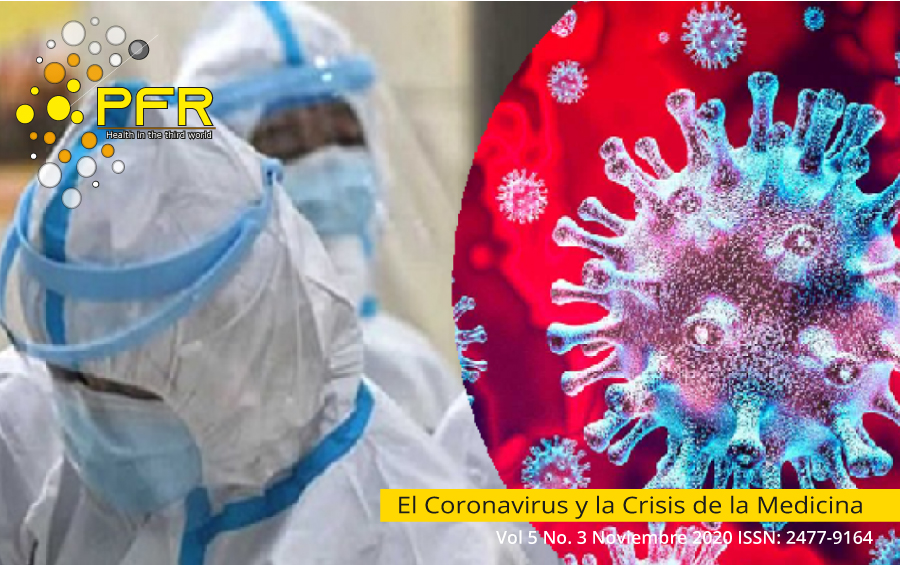Natural Medicine and COVID 19 in Ecuador
Keywords:
natural medicine, family strategies, Covid-19Abstract
Ecuador is a pluricultural country, which is reflected in its history of medical pluralism. This has become especially apparent with the spread throughout the country of COVID-19. This paper discusses survey results on the use of natural medicines to prevent the virus. Respondents in the region of Santo Domingo de los Colorados indicate they have turned to a variety of natural remedies, such as lemon, ginger, and garlic, during the pandemic. This contributes to a growing body of studies that analyze the use of natural medicines to treat or prevent COVID-19.
Downloads
References
Ecuador, T. (2015). "Comunas tsáchilas." Retrieved 11/11, 2020, from http://tsachilas.com/.
Finerman, R. and R. Sackett (2003). "Using Home Gardens to Decipher Health and Healing in the Andes." Medical Anthropology Quarterly 17(4): 459-482.
Fuzimoto, A. D. and C. Isidoro (2020). "The antiviral and coronavirus-host protein pathways inhibiting properties of herbs and natural compounds - Additional weapons in the fight against the COVID-19 pandemic?" J Tradit Complement Med 10(4): 405-419.
Ganguly, S. and S. Bakhshi (2020). "Traditional and complementary medicine during COVID-19 pandemic." Phytotherapy Research n/a(n/a).
Goodman, A. H. and T. L. Leatherman, Eds. (1998). Building a New Biocultural Synthesis
Political-Economic Perspectives on Human Biology, University of Michigan Press.
Herrera, D., et al. (2019). "Intercultural health in Ecuador: an asymmetrical and incomplete project." Anthropology & Medicine 26(3): 328-344.
knoema (2020). "Santo Domingo de los Tsachilas - Population." Retrieved 11/11, 2020, from https://knoema.com/atlas/Ecuador/Santo-Domingo-de-los-Tsachilas/Population#:~:text=In%202019%2C%20population%20for%20Santo,los%20Tsachilas%20was%20450%2C694%20persons.
León Cabrera, J. M. and A. Kurmanaev (2020). Ecuador’s Death Toll During Outbreak Is Among the Worst in the World. New York Times. New York.
Leslie, C., Ed. (1976). Asian medical systems : a comparative study, Berkeley : University of California Press, [1976] ©1976.
Leslie, C. (1980). "Medical pluralism in world perspective [1]." Social Science & Medicine. Part B: Medical Anthropology 14(4): 191-195.
Luque, J. S. (2007). "Healthcare Choices and Acute Respiratory Infection: A Rural Ecuadorian Case Study." Human Organization 66(3): 282-291.
Mignone, J., et al. (2007). "Best practices in intercultural health: five case studies in Latin America." Journal of Ethnobiology and Ethnomedicine 3(1): 31-undefined.
Miles, A. and T. Leatherman (2003). Perspectives on medical anthropology in the Andes. Medical pluralism in the Andes. J. Koss-Chioino, T. Leatherman and C. Greenway. London ; New York, Routledge: 3-15.
Olsen, W. C. and C. Sargent, Eds. (2017). African Medical Pluralism. Bloomington, Indiana University Press.
Organization, P. A. H. (2020). "Cumulative confirmed and probable COVID-19 cases reported by Countries and Territories in the Region of the Americas." PAHO Health Emergencies. Retrieved 11/11/2020, 2020, from https://ais.paho.org/phip/viz/COVID19Table.asp.
Pedersen, D. and C. Coloma (1983). "Traditional medicine in Ecuador: The structure of the non-formal health systems." Social Science & Medicine 17(17): 1249-1255.
Rios, M., et al. (2017). "“Horchata” drink in Southern Ecuador: medicinal plants and people’s wellbeing." Journal of Ethnobiology and Ethnomedicine 13(1): 18.
Tinitana, F., et al. (2016). "Medicinal plants sold at traditional markets in southern Ecuador." Journal of Ethnobiology and Ethnomedicine 12(1): 29.
Torri, M. C. (2013). "Perceptions and uses of plants for reproductive health among traditional midwives in Ecuador: moving towards intercultural pharmacological practices." Midwifery 29(7): 809-817.






